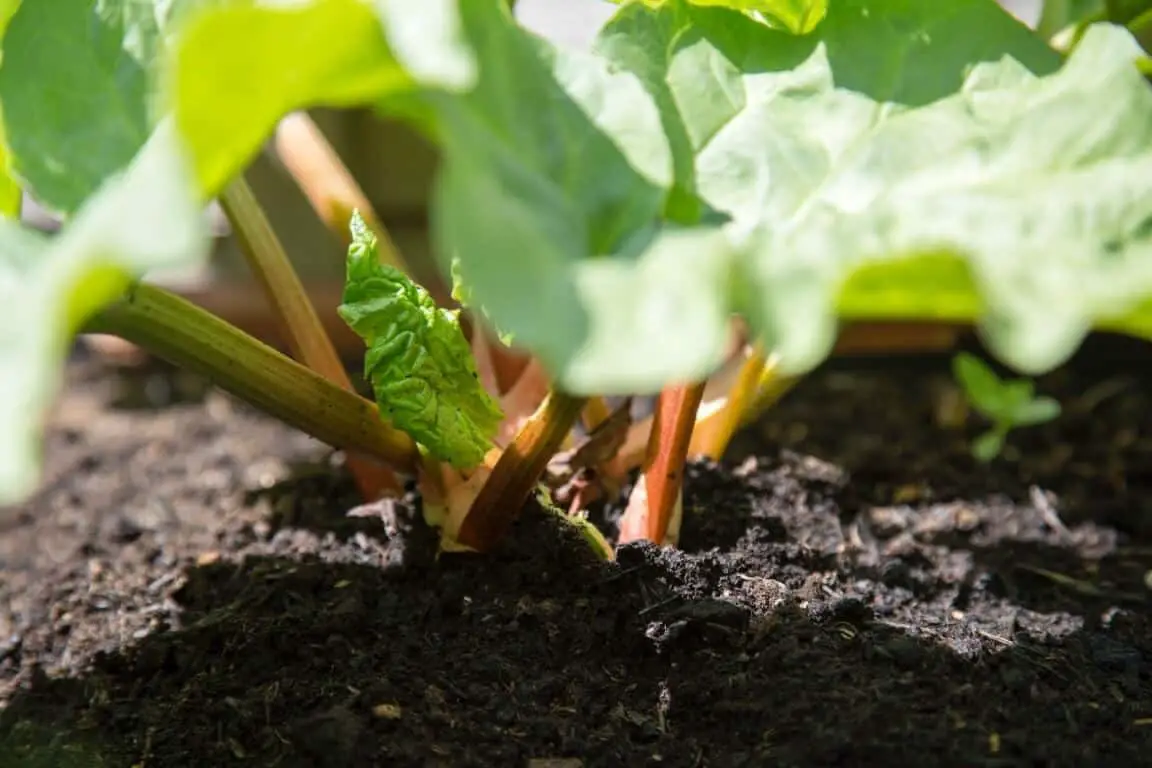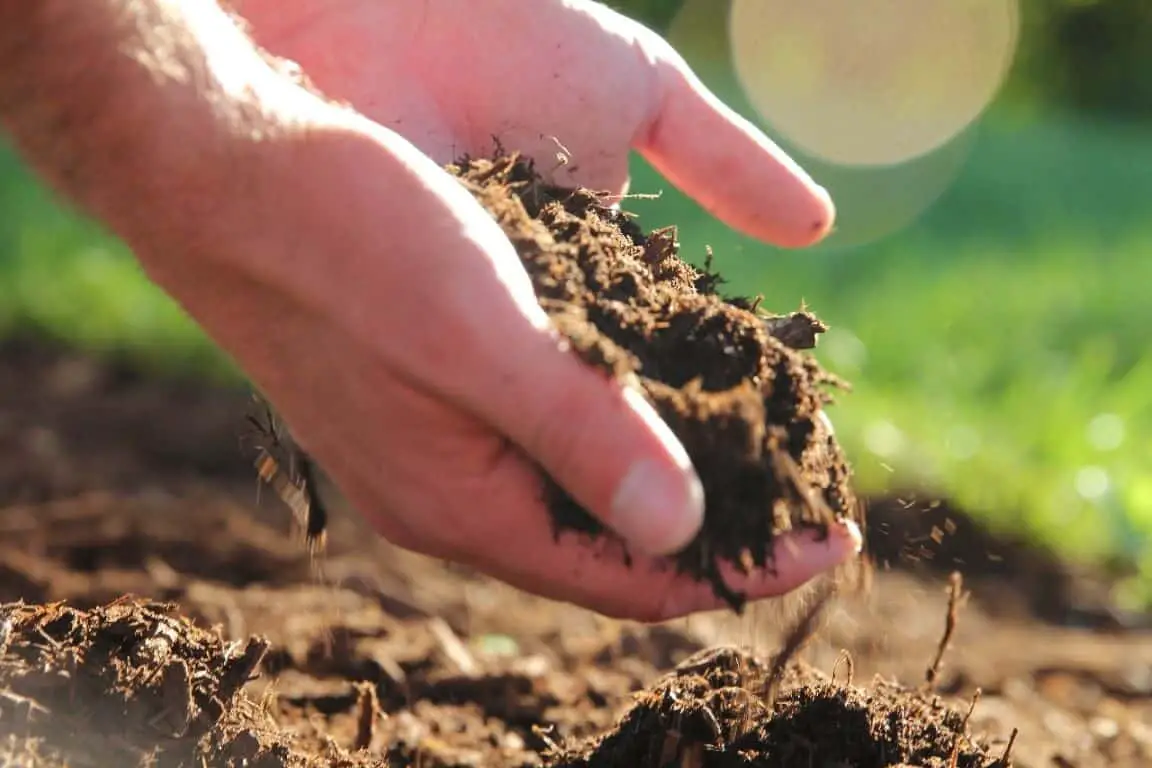Contents
When it comes to growing rhubarbs, almost anyone can do it, and you don’t even need to own a farm. A small rhubarb patch in your vegetable garden is an excellent idea as you can harvest them whenever you’d like some fresh rhubarb to make a delicious rhubarb pie or some jam. Growing this vegetable in a small patch of land in the backyard may seem impossible, but here’s how to do it successfully.

Rhubarb Vegetable Basics
Before planting a rhubarb, here’s a quick guide on what you should know about it.
Vegetable: The perennial plant is a common garden vegetable native to China.
Method of Propagation: Rhubarb leaf stalks and seeds are commonly used to propagate the plant.
Planting Season: An excellent time to plant rhubarb crowns is spring and autumn. The season keeps the Soil moist and warm. These two conditions are perfect for the growth and development of rhubarb leaves and rhubarb roots.
Planting Soil: All fertile, well-drained soils rich in organic matter are ideal for rhubarb growth. A well-drained soil structure prevents excessive soil moisture from causing crown rot in rhubarbs. Conversely, heavier soils that retain moisture help crown rot thrive in rhubarbs. Therefore, one of the heavier soils to avoid planting rhubarbs in will be the clay soil.
Cultivars: Rhubarb varieties can be red-stalked on green-stalked. You can get the green variety Victoria and the varieties with a deeper, red-colored stem such as Canada Red and Valentine from local garden centers or mail-order companies.
Pests and Diseases: Crown rot is a fungal disease known to affect rhubarbs planted in waterlogged soils. Snails, slugs, and insects such as the Rhubarb curculio are also known as pests that affect rhubarb growth.
Good to Read: Why Is My Rhubarb Flowering
What Are the Best Fertilizers to Use on Rhubarb?

Rhubarb plants are heavy feeders. This means that they rely heavily on the nutrients from the Soil to grow larger leaves and longer stems. As a result, rhubarbs primarily need copious amounts of Nitrogen, Phosphorus, and Potassium to survive.
Nitrogen is essential for photosynthesis to occur. Phosphorus is responsible for the development of rhubarb stalks and roots. Potassium provides strength to the plant, helping it fight off diseases and grow.
This section will discuss several commercial fertilizers with these three macronutrients as their essential ingredients and are the best for growing rhubarbs.
10-10 – 10 Fertilizer
This figure 10-10-10 refers to the NPK value of your Fertilizer. NPK stands for Nitrogen, Potassium, and Phosphorus. So let’s say you have a 100kg bag of 10-10-10 all-purpose Fertilizer,10kg is Nitrogen, another 10kg is Potassium, and another 10kg is Phosphorus.
5-3-3 Fertilizer
Admittedly, this falls short of the 10-10-10 Fertilizer as it has only 11% of NPK by composition, but if you look on the bright side, they are usually organic. However, it is helpful for other plants beyond rhubarbs; it is favored among experienced gardeners. In addition, it also has other macronutrients present in helpful compositions, making up for the deficiency.
24-8-16 Fertilizer
This commercial Fertilizer has a large composition of NPK, which is suitable for rhubarbs. However, their only shortcoming is that they are largely inorganic. Inorganic fertilizers are the bane of gardeners, especially environmentally friendly farmers out in the world. They also have a healthy presence of other minor elements like manganese and iron, essential for plant growth.
20-20-20 Fertilizer
This is a perfect example of a fertilizer that fulfills the 10-10-10 ratio and still delivers other macronutrients. This Fertilizer goes beyond the 10-10-10 principle, combining NPK in the ratio 20-20-20, giving it 60% by composition volume; more is better. Thanks to the high composition of nutrients in this Fertilizer, rhubarbs are known to thrive when used.
Other honorable mentions include the 16-16-16 Fertilizer, 4-4-4 organic Fertilizer, 5-10-10 Fertilizer, and the 30-0-10 or 24-0-15) Fertilizer.
Fertilizer Application
Most fertilizers have their method of application boldly written on their packaging. However, these are some basic tips you ought to know before fertilizing the well-drained Soil in your garden.
Period of Application: Fertilizers are best applied during the early spring season, just before new growth starts. Therefore, fertilizer applications in spring are one to look forward to.
Avoid Fertilizing Rhubarb Crowns: When applying Fertilizer, care should be taken so that the Fertilizer doesn’t get applied directly to the rhubarb crown.
Application Method: You should follow the application instructions written boldly on your fertilizer packaging. They come in different forms (some are liquid and others are granular) and compositions (their NPK values differ).
For instance, an All-Purpose Garden fertilizer may require you to disburse a half-cup around each plant, working it inches deep into the soil surface. On the other hand, a liquid fertilizer may require you to dissolve a quarter teaspoon into a gallon of water and mix it into the native Soil.
Composting to Grow Healthy Rhubarbs
Using compost heaps is another way to replenish the Soil for planting rhubarbs with all the essential nutrients that the plant will need to flourish. In addition, it can be the main source of Fertilizer for your plant. Once new growth starts in spring, add about a 3-inch layer of the compost pile to the soil surface.
Manure aids the soil structure and allows the rhubarb to absorb nutrients easily. It is advised not to add compost to the soil for rhubarb plants during the first year, but you can do it for mature plants.
Caring for Rhubarb

Caring for rhubarbs is easy to do and will help ensure an excellent harvest when the plant is mature.
- Applying organic mulch is very effective at reducing the amount of water lost through evaporation. Using a layer of straw for mulching is very effective when it comes to rhubarb, and it has the added benefit of discouraging weed growth around the rhubarbs.
- When seed stalks appear, remove them, for they won’t benefit the plant’s overall health. Instead, they will serve as energy funnels, siphoning off energy needed elsewhere in the plant.
- Once the spring arrives, you should make a light application of Fertilizer on the rhubarbs. However, you will wait for the ice to thaw before applying the Fertilizer.
- Even though you have spaced the plant adequately when plating, the roots will grow outward and possibly contact others, this will still serve as overcrowding, and rhubarbs don’t do well under such conditions. Therefore, sometime between the 3rd and fourth year after planting, dig up and split the roots to create spacing once again. You will need to repeat the procedure simultaneously after you are done.
- Clean off plant debris when the fall comes around. You can protect the rhubarbs by creating a mulch cover over the plants when winter comes around. Use rotted compost for this as it will help feed the plant organic matter. It will also help the plant be ready for the spring.
Related Questions
What Is the Best Manure to Put On Rhubarb?
It is best to use well-rotted manure of any kind for rhubarbs. For example, it could be horse manure or cow manure incorporated with composted leaves. The more it rots, the more effective the manure will be in helping the Soil retain moisture and absorb nutrients.
How Often Should I Fertilize Rhubarb?
Fertilizers are best applied during the early spring season, just before new growth. You should follow the application instructions written boldly on your fertilizer packaging. They come in different forms (some are liquid and others are granular) and compositions (their NPK values differ).
For instance, an All-Purpose Garden fertilizer may require you to disburse a half-cup around each plant, working it inches deep into the soil surface. On the other hand, a liquid fertilizer may require you to dissolve a quarter teaspoon into a gallon of water and mix it into the native Soil.
What Is the Best Organic Fertilizer for Rhubarb?
Jobe’s Organics has a herb plant food that’s slightly different from other popular choices in the market. It is a spike fertilizer and one of the best at that. Made from all organic ingredients, environmentally-friendly farmers love this product. It combines NPK in the ratio 4-3-3 giving it an 11% by total volume mass, making it ideal for rhubarbs.
Want to know more about gardening ?
Fill in your email address in the form below and you'll receive all the latest updates directly in your in-box.
Thank you for subscribing.
Something went wrong.